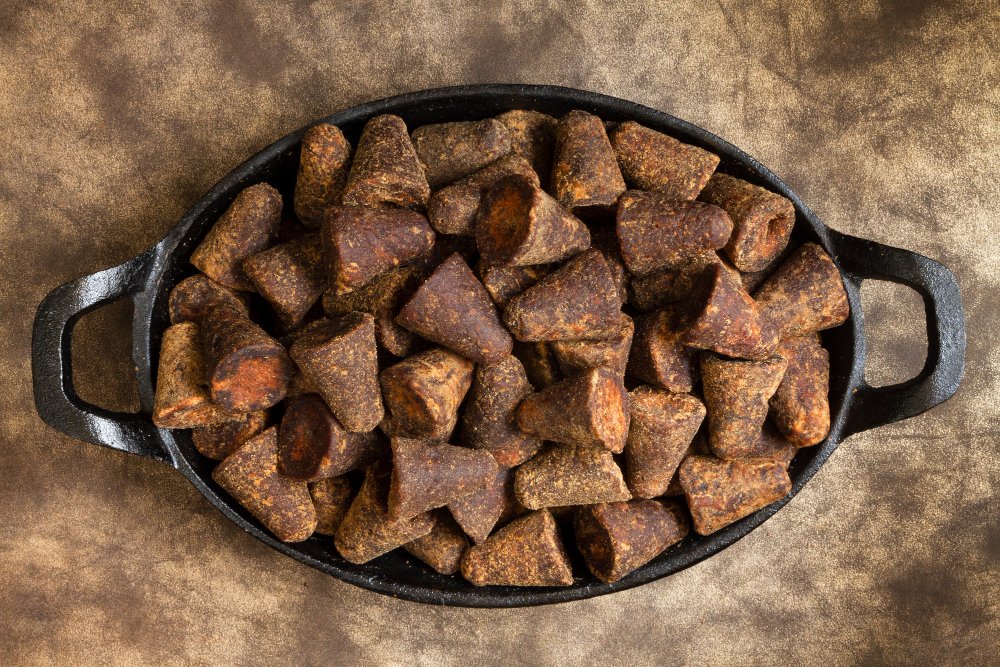Jaggery, a natural sweetener made from sugarcane or palm sap, holds a cherished spot in South Asian cuisines. With its rich, caramel-like flavor, it’s a key ingredient in traditional desserts like chikki and laddu, often paired with nuts and spices for added texture and taste.
Although jaggery contains some nutrients, such as iron and antioxidants, it’s still primarily sugar. This makes it important to enjoy in moderation, especially for those managing blood sugar levels or with conditions like diabetes. The challenge lies in reaping its nutritional benefits while keeping sugar consumption under control. How can we strike the right balance?
What Makes Jaggery Different from Sugar?
Jaggery differs from refined sugar in how it’s processed and its nutritional profile. While refined sugar is essentially pure sucrose, jaggery retains trace minerals like iron, magnesium, potassium, and calcium due to its minimal processing. It also boasts antioxidants and has a lower glycemic index (55) compared to sugar (65), meaning it raises blood sugar levels more slowly. A tablespoon (20 grams) of jaggery contains about 65-70 calories, 15-16 grams of sugar, provides 11% of the recommended daily intake of iron, and 4% of magnesium. This makes it a more nutrient-rich alternative to regular sugar.

How Nuts Enhance the Nutritional Value of Jaggery
Nuts like almonds, cashews, and peanuts are packed with healthy fats, protein, and fiber, which help slow down sugar absorption and stabilize blood sugar levels. Adding spices like cardamom, cinnamon, and fennel not only boosts flavor but also offers anti-inflammatory and blood sugar-regulating benefits. For instance, a jaggery-peanut brittle, such as chikki, combines protein and healthy fats, which help offset the sweetness of jaggery, making it a more balanced treat.
Try including sesame-jaggery balls, like Til ke Laddu, where sesame seeds bring in essential minerals such as calcium, iron, and magnesium, complementing the nutritional benefits of jaggery. To enhance the benefits of jaggery, you can also add spices like ginger or cinnamon to your jaggery-sweetened tea, promoting better digestion and offering antioxidant properties.
Control your portions for better results
The World Health Organization (WHO) recommends that added sugars should make up no more than 5% of your daily calorie intake. For a standard 2,000-calorie diet, this means you should limit your total sugar intake to about 25–50 grams per day, including sugars from jaggery and other sweeteners. For individuals without diabetes, consuming 10–15 grams of jaggery daily (roughly 1 tablespoon) is perfectly acceptable. You can enjoy this amount in small portions, like a jaggery-nut snack mid-morning and another after lunch.For those with diabetes, it’s best to limit sugar intake to 5–10 grams per day, but only when combined with protein or fiber to help manage blood sugar levels more effectively.
Perfect Timing Matters
Having jaggery in the morning or as a post-lunch snack can support better metabolism, as your body is more active and efficient at processing sugar during these times. It’s important to keep track of your total sugar intake, especially when using jaggery in drinks, desserts, or savory dishes, to maintain a balanced diet.










